Engineering Excellence Consulting in EST
Martin is in EST for 6 months and available for hands-on consulting in North America. This month’s spotlight: How tracking estimation accuracy is …
Strategies for iterative and continuous value delivery to customers.


Value Delivery refers to the systematic approach of providing consistent and meaningful outcomes to customers through iterative and incremental processes. It emphasises the importance of aligning product development efforts with customer needs, ensuring that every release contributes tangible benefits. This concept is crucial as it enables teams to focus on delivering value predictably and sustainably, fostering a culture of continuous improvement and responsiveness to change.
By prioritising value delivery, organisations can enhance customer satisfaction and loyalty, as they are more likely to receive products that meet their expectations. This approach encourages cross-functional collaboration, where teams work together to identify and eliminate waste, optimise workflows, and streamline processes. It also supports the principles of Lean and Agile methodologies, which advocate for delivering small, frequent updates that allow for rapid feedback and adaptation.
Value Delivery is not merely about the end product; it encompasses the entire lifecycle of product development, from initial discovery through to delivery and beyond. This long-term, systemic focus ensures that teams are equipped to respond to evolving market demands and customer feedback, ultimately leading to sustained organisational success and resilience in a competitive landscape. By embedding value delivery into the organisational culture, teams can create a robust framework that supports innovation and drives continuous value creation for customers and stakeholders alike.
Martin is in EST for 6 months and available for hands-on consulting in North America. This month’s spotlight: How tracking estimation accuracy is …
Explores how technical excellence in Agile development reduces risk, prevents technical debt, and boosts product quality and delivery speed through …
Explores how fostering a culture of quality and engineering excellence across teams leads to better, safer products, highlighting the impact of …
Unlock a smarter Definition of Done, start small, evolve standards, and build team momentum without overwhelm. Discover how progress drives …
Explains how Scrum supports continuous flow and agility by prioritising Sprint Goals, Done increments, CI/CD practices, and outcomes over rigid sprint …
Explains why staggered iterations harm software delivery, increasing technical debt, and recommends cross-functional teams, test-first, and working …
Stop firefighting late-stage bugs, discover how shifting left saves time, money, and reputation by building quality in from the start. Learn the …
Explores how Azure DevOps shifted from slow, two-year releases to rapid, continuous delivery, highlighting the benefits of fast feedback, agility, and …
Explores the financial, productivity, and reputational impacts of poor-quality code, and offers practical steps to turn code quality into a …
Covers key concepts of Sprint Reviews, interactive workshop delivery using Teams and Mural, technical challenges faced, participant feedback, and …
Explains why story points and velocity can mislead Agile teams, and recommends focusing on throughput, cycle time, and customer value for effective …
Explains why Story Points are subjective and unsuitable for comparing teams, and highlights objective metrics like throughput and value for measuring …
Releases feel risky when teams lack a clear Definition of Done. Learn how a strong DoD ensures stress-free, reliable software delivery with built-in …
Explains how DevOps and Agile work together to enable continuous delivery, rapid feedback, and customer value in software development and product …
Explores the problems with story points in Agile, their impact on team behaviour, and why flow metrics offer a better way to measure progress and …
Most features don’t deliver value. Short feedback loops and real user input help teams avoid wasted effort by ensuring they build what users actually …
Explores how frequent code deployments improve code quality, reduce technical debt, enable faster feedback, and support iterative, user-focused …
Explores a developer’s transition to DevOps, highlighting key challenges: cultural change, toolchain automation, and continuous learning for effective …
Explores how routine Agile questions can hinder team progress, stressing the importance of focusing on value delivery, goal alignment, and managing …
Explains how evidence-based management uses reliable metrics and KPIs at team and organisational levels to drive better decisions, value delivery, and …
Failing to deliver a usable product each agile iteration leads to lost trust, technical debt, poor adaptability, misaligned expectations, low morale, …
Explores how hypothesis-driven engineering helps teams maximise product value by testing ideas, measuring outcomes, and learning from failure to guide …
Explores how empowering Agile teams to adapt their processes boosts flexibility, continuous improvement, collaboration, and maximises value and return …
Explains how empirical Agile models improve project outcomes by increasing visibility, enabling change, reducing risk, and delivering value …
Continuous Improvement is the ongoing practice of relentless reflection and adaptation, driven by empirical evidence, aimed at consistently enhancing …
Explains how automation in continuous delivery improves software reliability, reduces risk, and enables faster, safer deployments through consistent, …
Learn how Evidence-Based Management uses data to guide Agile teams, improve decision-making, track value, and boost innovation, customer satisfaction, …
Multitasking reduces team productivity. Learn how focusing on finishing tasks, limiting work in progress, and value-based prioritisation boosts …
Delivering usable, working products frequently is key to reducing risk in Agile. Focus on feedback, automation, and lean practices over excessive …
A clear summary of Scrum’s framework, roles, events, artefacts, and values, explaining how teams use Scrum to deliver value and adapt to complex …
Using experimentation and validated learning to drive product decisions.
Techniques and strategies for improving operational efficiency and delivery.
Explores how greed in Agile leads to overwork and reduced value, offering strategies for value-driven delivery, balanced sprints, team trust, and …
Explains how feature flags enable safe, incremental software releases, support continuous delivery, and use user feedback to improve features before …
Learn how to achieve organisational agility by tailoring change to your unique context, building a guiding coalition, and engaging all stakeholders in …
Explores how Agile’s true value lies in delivering outcomes and adapting to change, not just following rituals or procedures, and highlights the need …
Enhancing teamwork, communication, and shared ownership for high performance.
Explores how evidence-based management uses data-driven practices to improve organisational agility, value delivery, and decision-making in both …
Validating product value requires releasing features to real users in production, gathering feedback, and measuring usage, satisfaction, and business …
Explains the Nexus framework for scaling Scrum with multiple teams, detailing roles, events, and artefacts to coordinate product delivery and manage …
Learn how to track, manage, and optimise product development costs by empowering teams with financial awareness, key metrics, and continuous …
Explains how close collaboration between product management and product development in agile teams drives market value, innovation, and continuous …
Learn the core skills and best practices for effective product backlog management, including risk, value, sizing, learning, and refinement to maximise …
Unrealized Value is one of the four key value areas of Evidence‑Based Management and represents a group of measures focused on the potential value …
Testing product ideas with real users to ensure market fit and customer value.
Explains the risks of using say-do metrics in Agile, highlighting how they encourage vanity metrics, harm psychological safety, and shift focus from …
Learn how product owners use Evidence-Based Management (EBM) to make data-driven decisions, track key value metrics, and maximise product value and …
Explains how Scrum Teams can use Kanban practices to optimise workflow, track flow metrics, and enhance transparency, efficiency, and continuous …
Outlines core Agile values and principles for software development, emphasising collaboration, adaptability, working software, customer focus, and …
Learn how to turn scope creep into an advantage by adopting Agile methods, focusing on value delivery, and adapting to changing requirements in …
Explores how effective product ownership and lean delivery drive alignment, collaboration, adaptability, and continuous improvement in modern product …
Comprehensive reference outlining Kanban principles, practices, and metrics for optimising workflow, value delivery, and continuous improvement in …
Explains why recessions are ideal for organisations to adopt agile, highlighting adaptability, rapid learning, and customer-focused growth in …
Explores how Visual Studio 2012 supports continuous quality enablement, automated testing, and rapid delivery in modern software development for …
Enable Business Agility to rapidly adapt, innovate, and deliver value in an ever-changing market.
Explains how product goals serve as intermediate strategic goals, guiding agile organisations through uncertainty using experimentation, outcomes, and …
Explains how a well-ordered, refined Product Backlog guides Agile teams, supports goal alignment, and ensures value-driven product development through …
Company as a Product (CaaP) is an organisational strategy that treats the entire company as a continuously evolving product, rather than a static …
Evidence-based management uses data-driven decisions to help organisations achieve business outcomes, adapt to market changes, and maximise value …
Explains how Product Owners can replace traditional project management with vision, value, and validation to guide teams, deliver real value, and …
We partner with businesses across diverse industries, including finance, insurance, healthcare, pharmaceuticals, technology, engineering, transportation, hospitality, entertainment, legal, government, and military sectors.

Alignment Healthcare
NIT A/S

YearUp.org

Graham & Brown

Genus Breeding Ltd
Boxit Document Solutions

Freadom

Hubtel Ghana

Lockheed Martin

Slicedbread

Emerson Process Management
CR2

Higher Education Statistics Agency

ALS Life Sciences

Brandes Investment Partners L.P.

Sage

DFDS

Deliotte

Washington Department of Transport

Royal Air Force

Department of Work and Pensions (UK)

Nottingham County Council

Washington Department of Enterprise Services

New Hampshire Supreme Court

Deliotte

Jack Links

Xceptor - Process and Data Automation

Milliman

Cognizant Microsoft Business Group (MBG)

Qualco